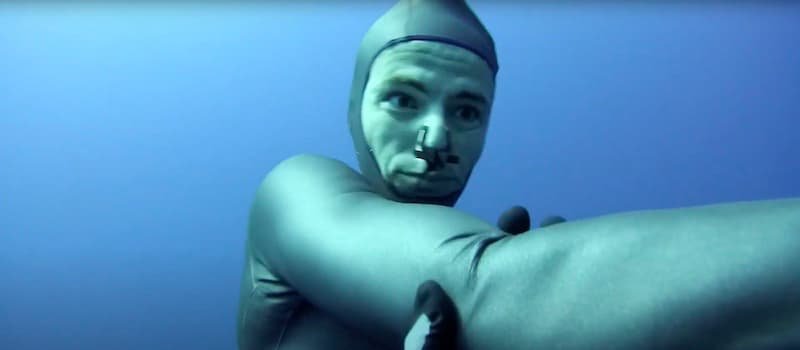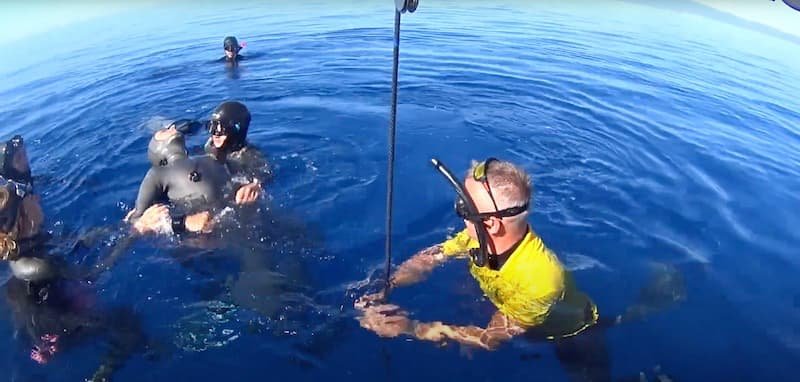
 Nick Pelios
Freediver, Creator
Nick Pelios
Freediver, Creator

 Nick Pelios
Freediver, Creator
Nick Pelios
Freediver, Creator
Dr. Juani Valdivia, a renowned neurosurgeon, was interviewed by Gert Leroy. In this engaging discussion, they delved into the various neurological phenomena associated with freediving and the serious issue of syncope, or blackout. Their conversation sheds light on the medical complexities of this extreme sport, offering valuable insights into the causes, clinical presentations, and risk factors of these potentially dangerous events. For anyone involved in or interested in freediving, understanding these risks is crucial for maintaining safety and improving performance.
Freediving, while a thrilling sport, can pose significant neurological risks. The medical incidents that can affect the brain range from "samba," which refers to a loss of motor control, to "blackout," a term used in freediving to describe syncope or fainting. Samba involves rhythmic, paced movements known as myoclonic jerks. Despite being somewhat controlled, these jerks can evolve into a blackout, where consciousness is lost. Interestingly, an individual can experience samba while remaining fully conscious and aware of the event. Blackout, however, is a more severe condition where the diver loses consciousness entirely, typically due to insufficient oxygen supply to the brain.

The primary cause of syncope, or blackout, in freediving is hypoxia—a condition where there is a decrease in oxygen saturation in the blood, resulting in the brain receiving less oxygen. Oxygen is crucial for brain cell function, and its deficiency can lead to loss of consciousness. Other causes include occult cardiac conditions like arrhythmias, which are abnormalities in heart rhythm. Additionally, overpacking, where a diver takes an excessive final inhale, can compress the heart and restrict blood flow to the brain, leading to syncope. Thus, while holding your breath is a key aspect of freediving, these other factors also significantly contribute to the risk of blackout.
Freediving-related cerebral hypoxia can present in various ways, often observed in stages. The initial stage is asymptomatic hypoxia, where oxygen levels drop, but there are no noticeable symptoms. A diver may continue with normal technique and propulsion, unaware of the impending danger. The next stage, controlled symptomatic hypoxia, occurs when the diver senses something is wrong but maintains proper technique. If not addressed, this can quickly progress to loss of motor control (LMC), which can be either conscious or unconscious. The most severe stage is a blackout, characterized by unconsciousness and myoclonic jerks. Variants of blackout include atonal blackout, where the diver has no muscle tone, and prolonged hypoxia blackout, where consciousness is lost for an extended period.

Several risk factors can predispose a diver to LMC or blackout. Dehydration is a significant factor, as it impairs the diver's reflexes and ability to maintain adequate blood pressure and cerebral blood flow. Electrolyte imbalances, such as abnormal levels of potassium, can trigger cardiac arrhythmias, increasing the risk of syncope. Anemia, characterized by low hemoglobin or hematocrit levels, reduces the blood's oxygen-carrying capacity, heightening the risk of blackout. Additionally, certain medications that affect blood vessel constriction or an undiagnosed cardiac condition can also contribute to the risk. These factors highlight the importance of thorough medical evaluation and proper hydration and nutrition for safe freediving. Freediving is a sport that demands respect for the physiological limits of the human body. Understanding the neurological phenomena, causes, clinical presentations, and risk factors associated with freediving-related syncope is crucial for anyone engaged in this activity.